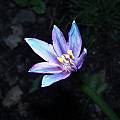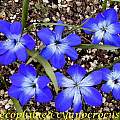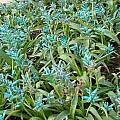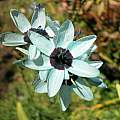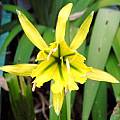I've grown 'Alberto Castillo' along with a number of other cultivars of Ipheion uniflorum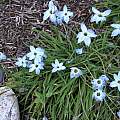 for years, including a white flowered one I got from England many years ago. And 'Alberto Castillo' is noticeably different than all of the others. It's the most vigorous. It has those distinctly more bluish green leaves. And it almost looks like it's a hybrid with some other species, or at least a different subspecies. I agree that the seeding around produces lots of interesting color variations. But at least in this area (inland southern California), the various cultivars never change that drastically in coloration from year to year.
for years, including a white flowered one I got from England many years ago. And 'Alberto Castillo' is noticeably different than all of the others. It's the most vigorous. It has those distinctly more bluish green leaves. And it almost looks like it's a hybrid with some other species, or at least a different subspecies. I agree that the seeding around produces lots of interesting color variations. But at least in this area (inland southern California), the various cultivars never change that drastically in coloration from year to year.


